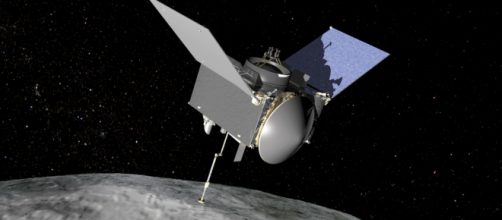Almost ready for its mission to an Asteroid
The Origins, Spectral Interpretation, Resource Identification, Security-Regolith Explorer (OSIRIS-Rex) spacecraft is getting ready for its launch on 8 September, 2016. This spacecraft is intended to conduct detailed studies of Bennu´s surface chemical composition, sun´s pressure acting on the asteroid and collect a sample of its surface which will be sent to earth for analysis.
It´s planned that OSIRIS is to arrive on Bennu´s orbit in 2018. Upon arriving, OSIRIS will orbit Benn for a year, during which it will use the mapping instruments to record Bennu´s surface features and chemistry, then the spacecraft will collect a sample rock that it will bring back to earth for examination; this will mark the end of the mission.
Asteroid Bennu
(101955) Bennu is a near earth asteroid of 490 meters (1610 feet) in diameter and a mass of 6.0 x 10>10 kg its nearest distance (perihelion) to the sun is within earth’s orbit and its farthest distance (aphelion) is close to Mars ‘orbit. Bennu belongs to the left overs of the formation of the solar system and its study may provide information of the early beginnings.
Objectives of the mission
The main goals for this missions include the analysis of a sample of this asteroid, which will give a deeper insight about the origins of the solar system; the spectral study of its surface; recording the chemistry and mineralogy contents of this asteroid; measuring the effects of sunlight on its orbit, and picking up samples of the loose material (regolith) in its surface.
Scientific instruments
OSIRIS-Rex is equipped with a total of five instrument on board. Three cameras for mapping the global surface of the asteroid and a single camera for closer look a sample site. Laser altimeter (OLA) to map the asteroid´s shape and measure its distance; Thermal Emission Spectrometer (OTES) for measuring the asteroid´s infrared spectrum; Visible Infrared Spectrometer (OVIRS) to measure visible and infrared light and a Regolith X-ray Imaging Spectrometer (REXIS) to observe the X-ray spectrum of the asteroid.
Challenges
Bennu is one of the smallest bodies ever visited by a spacecraft, and this makes this mission a challenge, as the asteroid´s gravity is very small and the spacecraft will have to remain within a mile and a half (2.4 km), so that bennu´s gravity and the pressure from the sunlight may allow it to stay in orbit.

